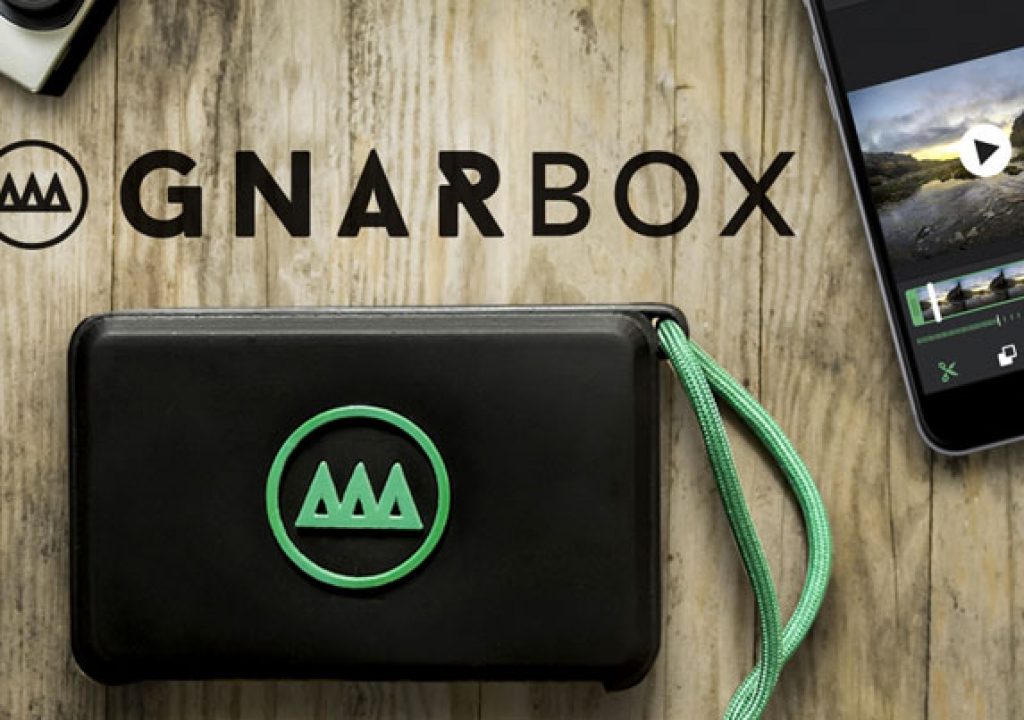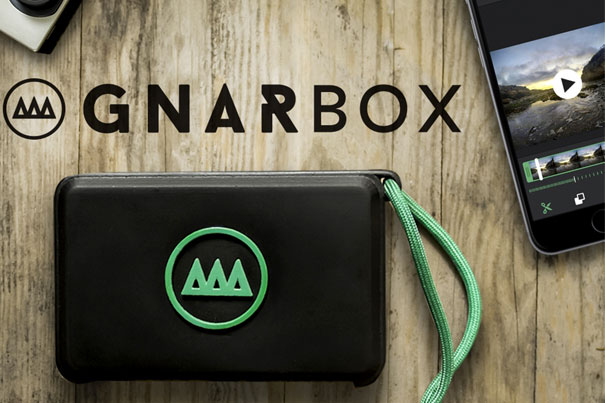
Gnarbox is the little baby of a team that dreamed of having a way to share content with a new generation of mobile users. With an initial goal of $100,000, the project was funded on Kickstarter recently. A total of 2988 backers pledged $540,776 for this device.
Professional and amateur photographers and cinematographers always struggle with the problem of working with images when travelling. Either they carry their equipment around, meaning, laptops, external hard drives and cords, or they wait until they return home. Now, there may be a solution: whether you want to share photographs with your friends, while travelling, or edit and share high resolution video from a shoot directly to a client, the Gnarbox is the answer to what is usually a challenge.
Dreamt, conceived and built by a team of early adopters of GoPro cameras that shortly thereafter picked DSLRs, the Gnarbox combines the capabilities of a robust processor with the mobility and intuitiveness of a smartphone, so you can manage your footage with less gear. Now you can truly explore more and carry less.
The team’s passion for adventure, technology and media, led them to build a new solution for a new generation of mobile users. With a background of shooting photos and videos with their phones, they knew there had to be an easier way to edit content and share it with friends. They spent over two years building a solution to the biggest problem with owning a camera: managing all of those HD videos and photos. When they started, the idea of a mobile device that could edit up to 128GB of 4K video and RAW photo in real-time seemed inconceivable. Now, eight prototype versions later, Gnarbox is no longer a concept, but an inevitability.
The Gnarbox is not much different – except for the editing capability – from the old portable hard drives, like the Jobo, used when digital became a mainstream platform for photographers travelling. The Sonic portable models from Jobo, like the Giga one Sonic, (see image below) offered 160GB of space (Jobo models had from 40 up to 200GB) slots for multiple memory cards, a 1.8” monochrome LCD showing the amount of hard drive disk available, the status of every download, a battery status indicator, and an external power connection (with included AC adapter).
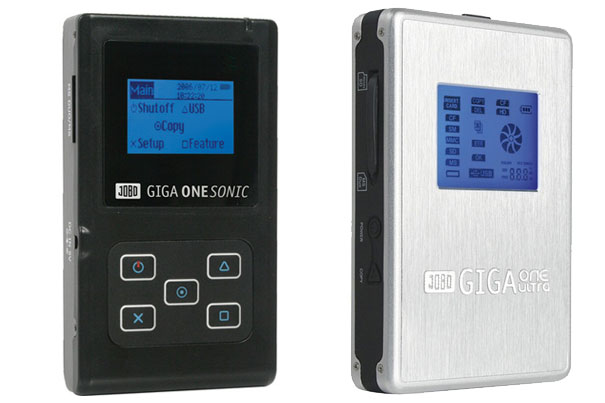
The first portable hard drives were essential for photographers to back up their data while on the road, at a time when flash memory was expensive – early 2000 – and hard drives (who remembers IBM’s Microdrive, cheaper and with more space than Compact Flash, used as a CF card until 2006?) was the most logical device to use in cameras.
Some portable hard drives even offered the chance to see archived photos on the LCD screen, like the Epson P-7000, from 2008, considered to be “an essential tool for the on-the-go, professional photographer” and “the perfect partner to your digital SLR camera” Offering a new tethering capability to efficiently back up and view images as you shoot, the Epson P-7000 could display both RAW and JPEG images while on location with the Photo Fine Premia LCD, exclusively from Epson.
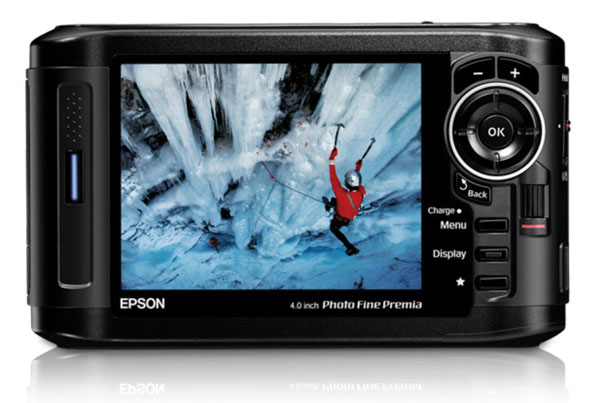
Displaying over 16.7 million colors, the Epson P-7000’s 4-inch LCD supports 94% of the Adobe RGB color space, allows to zoom in to confirm focus and fine detail, and share your images the way they were meant to be seen — just as you captured them. With both audio and video output, it’s easy to create customized slide shows to take your digital portfolio with you wherever you go.
According to Epson, “the portable P-7000 is the perfect choice for client presentations or on-location shoots. Why transport your laptop when you can quickly store and backup images right from your memory card using this convenient, compact device? With the Epson P-7000 and its included Travel Pack, you’ve got everything you need for all your photographic assignments.”
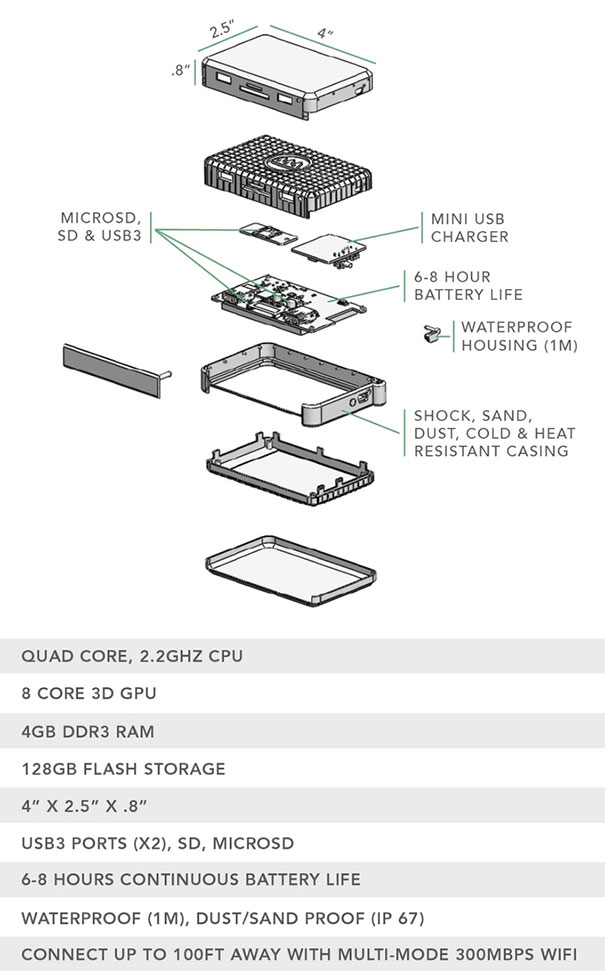 The Gnarbox resurrects the tradition that Jobo and Epson hard drives – and other brands – represent, taking it to a whole new level, pairing the hard drive with a smartphone, another device most of us carry around all the time. When you use Gnarbox to edit from your smartphone, all of the heavy lifting is placed on the device’s CPU and GPU. It’s like having a small but powerful laptop connected to your smartphone, which functions as keyboard and screen.
The Gnarbox resurrects the tradition that Jobo and Epson hard drives – and other brands – represent, taking it to a whole new level, pairing the hard drive with a smartphone, another device most of us carry around all the time. When you use Gnarbox to edit from your smartphone, all of the heavy lifting is placed on the device’s CPU and GPU. It’s like having a small but powerful laptop connected to your smartphone, which functions as keyboard and screen.
The Gnarbox was designed so it is able to encode, decode, and stream up to 4K video to your phone. Traditional mobile apps lack this key element, and therefore can’t access and control Ultra HD videos or RAW photos. The team behind the project says that “by customizing our system to serve ONLY media, we are optimizing the performance of our hardware in an innovative way.” It should be noted that at the moment the Gnarbox only has an iOS app built, although the Android build will be added now that the Kickstarter funding was successful. The IOS app is for iPhone. While compatible with iPad, it is not optimized, running as a scaled version.
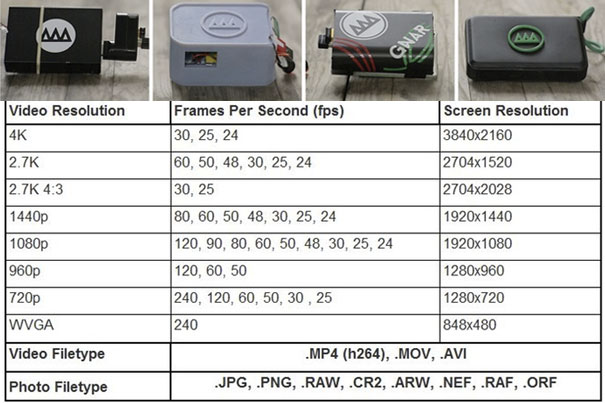 The Kickstarter version of Gnarbox is limited to 128GB of Flash memory, which creators say is “high quality flash memory which helps us stay FAST, LIGHT and AFFORDABLE.” But there are plans to offer a 1TB version in the future. Still, the Gnarbox can be connected to external drives through the two USB 3.0 ports, to push and pull files to and from external hard drives.
The Kickstarter version of Gnarbox is limited to 128GB of Flash memory, which creators say is “high quality flash memory which helps us stay FAST, LIGHT and AFFORDABLE.” But there are plans to offer a 1TB version in the future. Still, the Gnarbox can be connected to external drives through the two USB 3.0 ports, to push and pull files to and from external hard drives.
If all goes according to plan, in December 2015 the Gnarbox for the Kickstarter supporters will be distributed. The retail price of the product, when it launches, will be $249. To find more about the Gnarbox visit their webpage.

Filmtools
Filmmakers go-to destination for pre-production, production & post production equipment!
Shop Now